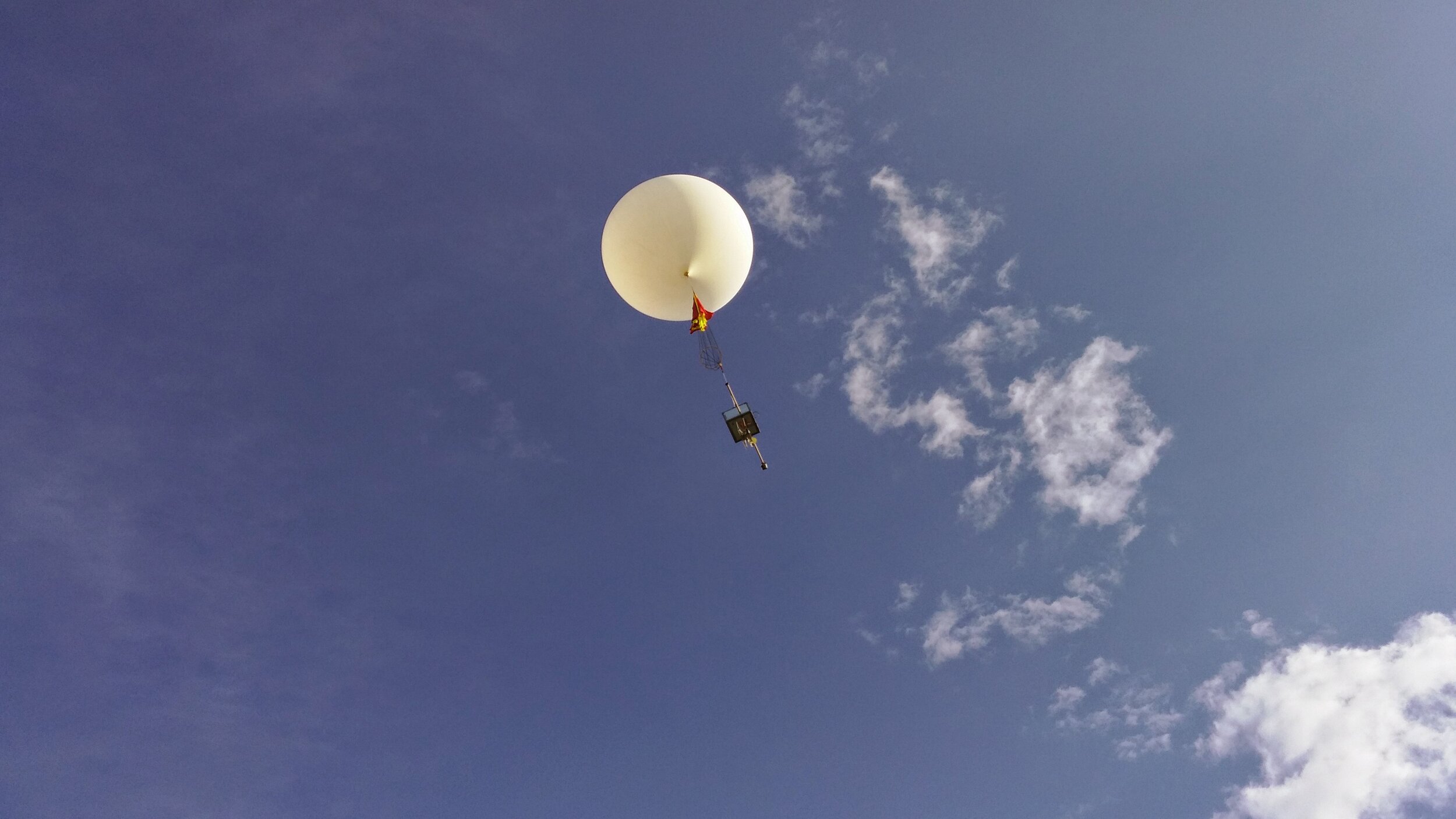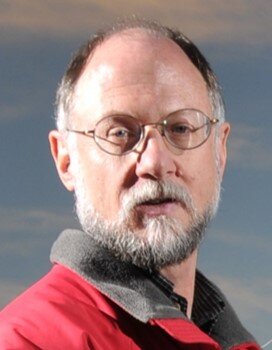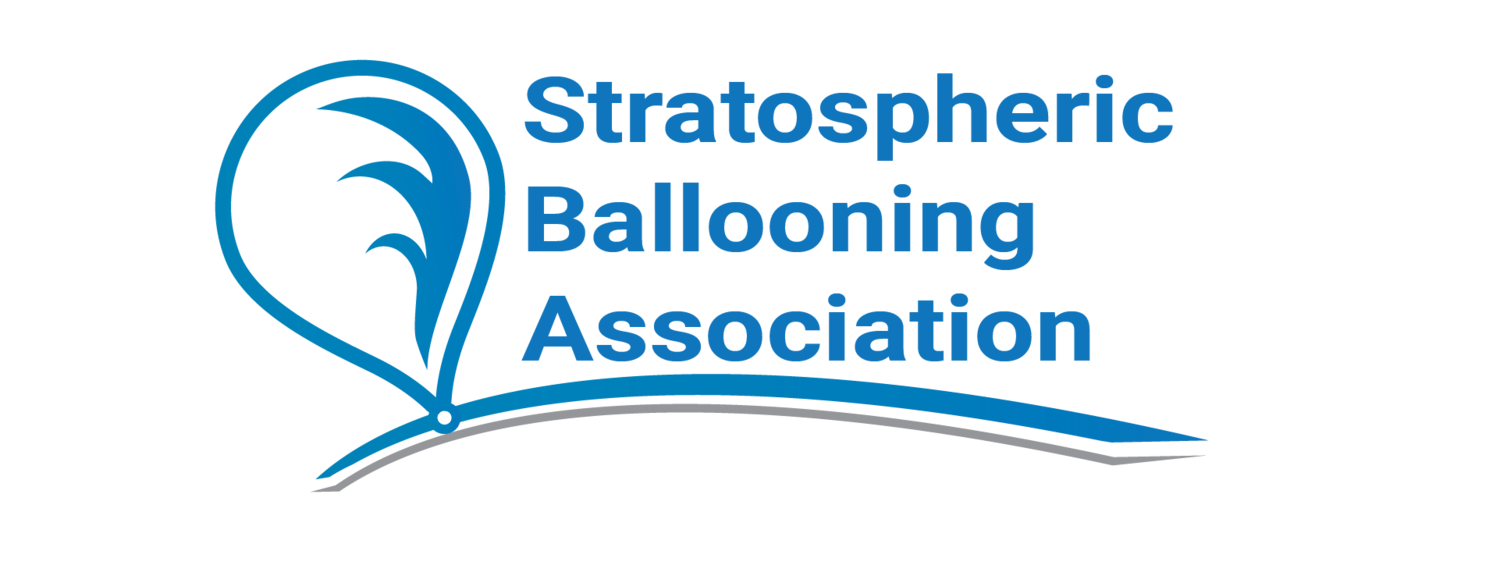
AHAC 2020 Conference Schedule


Panel Session - Eclipse Ballooning
Moderator
Dr. Angela Des Jardins, a solar physicist by training, is the Director of the Montana Space Grant Consortium and Montana NASA EPSCoR, and is an Assistant Research Professor of Physics at Montana State University. Montana Space Grant and NASA EPSCoR are programs that work to strengthen education and research in Montana in aerospace science and engineering. In addition, Angela is the innovator of the NASA Eclipse Ballooning Project, which engaged 55 student teams from across the country in sending live video (a first!) from high altitude balloons to the NASA website and NASA TV on eclipse day 2017. Angela’s mission is to use the ability of space to ignite the human sense of wonder.
Panelists
Randal (Randy) Larimer
Randal (Randy) Larimer, PE is an electrical engineer with over forty years of industry and educational experience, is a former adjunct Assistant Professor in the Electrical and Computer Engineering Department at Montana State University and is the current Deputy Director of Montana Space Grant Consortium (MSGC). Randy is Co-Director of MSGC’s high altitude ballooning program called BOREALIS and was the technical designer of the nationwide NASA Eclipse Ballooning Project. Randy’s mission is to engage, teach and mentor STEM students using high altitude ballooning platforms to help students be industry ready when entering the workforce.
Jennifer Fowler
Jennifer Fowler serves as the Assistant Director of NASA’s Montana Space Grant Consortium (MTSGC). She has run stratospheric ballooning activities out of the University of Montana since 2004. Beginning in 2015 she began focusing on atmospheric gravity wave measurements during total solar eclipses using standard radiosonde payloads. Her team has since participated in the 2017 total solar eclipse in the US, the 2019 total solar eclipse in South America, and is scheduled to make measurements with teams from Kentucky, Idaho, and Oklahoma in December 2020 for another South American total solar eclipse.
David Gerson
David Gerson is a systems engineer and general problem solver. He was a propulsion development engineer and project manager at SpaceX and is now building new engineering tools for DARPA. While at Stanford, he co-founded the Global Space Balloon Challenge, an organization that coordinates for people around the world to fly balloons during the same window in time and collaborate on their projects through an online platform. David believes the upcoming eclipses are an amazing opportunity to get kids globally excited about STEM - both by actively participating in HAB projects and getting access to pictures and data from other organizations. Hopefully we can work together to do something amazing!
Jack Bryan
Hello all. My name is Jack Bryan, and I am the Head of Technical Operations at Sent into Space. At Sent into Space, we use sounding balloons to send cameras well into the stratosphere to capture stunning imagery of the Earth. We first filmed an eclipse in 2017 for the BBC using 6 modified action cameras to create a composite 360 video. We have come a long way since then and are looking to film an eclipse with our new camera technology including a 5.2k integrated 360 camera, and the worlds only space capable 8K Red Helium cinema camera.
Jason Krueger
In 2006 Jason Krueger started StratoStar and has been helping educators start academic high-altitude balloon programs, in order to implement Project Based Learning (PBL) within a school’s core curriculum. StratoStar provides educators with curriculum, training, software, and hardware including custom satellite-based balloon tracking with over-the-horizon commanding capability. Jason is a graduate of Taylor University and was mentored by Dr. Voss and Jeff Dailey in PBL and high-altitude balloon electronics development. StratoStar Programs around the country have over 1,000+ successful missions.
Jason’s Eclipse Idea: Teams develop opensource electronics, firmware and 3D printed design to allow anyone to float latex balloons hours during the eclipse to increase data collection and expand the launch window for teams.
Dr. Suzanne Weaver Smith
Dr. Suzanne Weaver Smith began her career working in aeronautics and space R&D at Harris Corporation in 1980. Her PhD (Virginia Tech, 1988) focused on vibration-based damage location for the International Space Station. Dr. Smith joined the University of Kentucky (UK) faculty in 1990. Over 30 years at UK, Dr. Smith has successfully led numerous research projects including industry partners and educational programs for students, illustrating her abilities to translate results to valued applications, economic benefit and meaningful student opportunities. Dr. Smith is the Emeritus Director of the NASA Kentucky Space Grant and EPSCoR Programs that provide research support and student fellowships across Kentucky. Her accomplishments and impact led to recognition as a National Science Foundation Young Investigator, college and university teaching awards, induction into the 2019 Kentucky Aviation Hall of Fame, and selection as a 2020 Fellow of the American Institute of Aeronautics and Astronautics (AIAA).
Connections to high-altitude balloon platforms started when Dr. Smith was the lead advisor on a NASA project (BIG BLUE Mars Airplane) using near-space experiments to demonstrate the feasibility of deployable wings for UAS extraterrestrial exploration. Through four successful student-led high-altitude balloon experiments, BIG BLUE provided systems-based experiential education to over 300 university students, placing more than 50 in the aerospace workforce. More recently, she also advised Kentucky student-led teams and hosted visiting teams of the impactful nationwide NASA Eclipse Balloon livestream event.
Her husband, Bill, is a Kentucky native and University of Kentucky graduate. He is a professor in the UK Department of Electrical and Computer Engineering. They have one daughter, Virginia, who is a PhD student in Aerospace Engineering at Virginia Tech.

Afternoon Oral Presentations
Afternoon Oral Presentations
2:15 p.m. - Possibilities for STEM engagement in the "Nationwide Eclipse Ballooning Project 2021-2025”, (Randal Larimer)
2:30 p.m. - Wavelet Analysis of Radiosonde Data, (Keaton Blair)
2:45 p.m. - Lapse Rates, (Shirley Davidson)
3:00 p.m. - Active Stabilization for Imaging Devices, (Maxx Mudd)
3:15 p.m. - Balloon Borne Investigation Zenith Angle Dependence of Cosmic Ray Showers, (Erick Agrimson et al.)

AHAC 2020 Poster Session II
Poster Session II
Poster 5 - Stratospheric Ballooning Investigation of the 2023 and 2024 Eclipses, (Anisa Tapper et al.) Introduction Video - https://youtu.be/5IYi6d3NuSo
Poster 6 - Measurements Recorded via Stratospheric Ballooning, (Callie Korzeniowski et al.) - Introduction Video - https://youtu.be/7H_8oKtAcrs
Poster 7 - System Architecture of a High Altitude Live-Streaming System, (Natalie Condzal et al.) Introduction Video - https://youtu.be/wMO8_x7gAg4
Poster 8 - Ground Based Tracking System for High Altitude Weather Balloons, (Larson Dean Brandstetter et al.) - Introduction Video - https://youtu.be/JU8bVfxKm3Y

AHAC 2020 Keynote Speaker - Dale Lawrence
Hypersonic Flight in the Turbulent Stratosphere (HYFLITS) In-Situ Measurement Experience
Keynote Speaker - Dale Lawrence
Dale Lawrence is a professor in the Smead Aerospace Engineering Sciences department at the University of Colorado in Boulder. His recent interests center around design and control of vehicles and sensors for improving and lowering the cost of geophysical measurements, ranging from Air-Deployed Micro-Buoys for ocean surface and subsurface sensing, to the DataHawk small unmanned aircraft system for observations in the atmospheric boundary layer and lower troposphere, to the HYFLITS balloon system for characterizing dynamics in the stratosphere.

AHAC 2020 Morning Panel - Ballooning during COVID-19
Student experiential ballooning projects generally involve teams of participants working in close proximity to develop balloon payloads, groups of personnel to prepare the balloon string for launch and support flight operations, plus interactions with property owners and municipal authorities in the field during balloon string recovery. Since spring of 2020, attempts to curb COVID-19 infections have resulted in severe restrictions on the size of groups, personal interactions, and institution shutdowns. This panel will explore the impact of these restrictions on student ballooning programs and methods for mitigating risk while providing an experiential program for students during these COVID-19 times.
Moderator
T. Gregory Guzik
T. Gregory Guzik is the Director of the Louisiana Space Grant / NASA EPSCoR program and has been involved with both scientific and student ballooning activities for over 30 years. His scientific career has focused on astrophysical energetic particles including large (~6,000 pound) class cosmic ray balloon instruments launched in northern Manitoba and several long duration balloon flights in Antarctica. Dr. Guzik developed and currently manages both the Louisiana Aerospace Catalyst Experiences for Students (LaACES) entry-level experiential student ballooning program as well as the advanced High Altitude Student Program (HASP). He currently serves on the NASA Scientific Ballooning Roadmap Program Analysis Group advising on workforce development issues.
Panelist
James Flaten
James Flaten serves as the Associate Director of NASA’s Minnesota Space Grant Consortium (MnSGC). He has run stratospheric ballooning activities out of the University of Minnesota – Twin Cities since 2007 and also helps train/advise ballooning groups around the state (and beyond). COVID-19 suspended his ballooning flight operations from March through early July, but then he received permission to resume “socially-distant ballooning operations” so he has been doing launches with small teams of students (driving in separate vehicles) ever since. He is currently teaching a freshman seminar on stratospheric ballooning, with a class flight still planned for later this fall.
Erick Agrimson
Professor Agrimson has been doing HAB work since the fall of 2009 with over 60 flights to date having been completed. St. Catherine University had our all women’s team investigating atmospheric changes during the 2017 total solar eclipse with a team of 5 undergraduates and two alumna returning to the program to mentor students during this phenomenal event. Due to the COVID-19 changes this summer we conducted virtual ballooning. A team of collaborative undergraduate researchers (being mostly new to ballooning) selected a HAB literature review and assisted in planning for the upcoming eclipses this summer in this environment.
Aaron Ryan
Aaron Ryan is a graduate student at Louisiana State University (LSU) that works with the Louisiana Space Consortium (LaSPACE). He assisted in transitioning the Louisiana Aerosphace Catalyst Experience for Students (LaACES) program to remote payload development environment. LaSPACE was able to conduct a balloon launch of several student payloads from multiple Louisiana universities in early August while by maintaining social distancing and PPE during launch and recovery operations. Starting in September of 2020 LaSPACE will be teaching an online version of the LaACES program for student ballooning teams at institutions across Louisiana.
Jeanne Garriz
Jeanne Garriz is a 3rd year undergraduate student at Louisiana State University. She participated in a student ballooning course and was the project manager of a student payload development team during the 2019-2020 school year. The flight and preceding deliverables were postponed due to COVID-19, and the team transitioned to remote work on the payload beginning in April 2020. The payload was eventually flown in August. She will continue to work for the Louisiana Space Grant Consortium on another balloon payload beginning this fall.
Matthew Nelson
Matthew Nelson serves as the President of the Stratospheric Ballooning Association and is also a faculty member at Iowa State University in the Aerospace Engineering department. There, Matthew serves as the Assistant Director to the Iowa Space Grant Consortium and as the Director of the Make to Innovate program. Under the Make to Innovate program, he supervises several student hands on projects including the High Altitude Ballooning Experiments in Technology (HABET) and their CubeSat project, CySat. Matthew has been doing HAB launches since 2006 and recently the HABET team has been developing a remote launch setup in order to continue launches during the COVID-19 Pandemic. In addition he and another faculty was awarded funding through ISGC for a new base program that will include promoting HAB and getting K-12 and higher education more involved in HAB and using HAB to promote STEM.

AHAC 2020 Poster Session 1
Poster Session 1
Poster 1 - State-Wide STEM Student Engagement with High-Altitude Ballooning, (Steven Jon Russell) - Introduction Video - https://youtu.be/JnNPnq_fyB0
Poster 2 - Waterproof Inline Flight Termination System for Ocean Bound High Altitude Balloons, (Lance Donald Nichols et al.) - Introduction Video - https://youtu.be/gGi5q1HHIrk
Poster 3 - Flying “Mock” CubeSats on Stratospheric Balloon Flights: An Update about “Mock P-PODs” and the 3U “MOC-SOC”, (Paul Wehling et al.) - Introduction Video - https://youtu.be/mZEGw25jcVs
Poster 9 - Altitude Control System for High Altitude Helium Weather Balloons, (Wilson Vogt et al.) - Introduction Video - https://youtu.be/jfX51XzGQsM

AHAC 2020 Morning Oral Presentations
Paper Schedule
9:30 a.m. - Send an Amateur Radio High Altitude Balloon around the World, (Bill Brown)
9:45 a.m. - A HAB Sabbatical and Balloons with Hydrogen, (Rick Eason)
10:00 a.m. - Modifying and Calibrating Low-Cost Optical Particle Counters for Stratospheric Ballooning Use, (Nathan Pharis et al.)
10:15 a.m. - Virtual Space Camp: Explore Near Space from the Comfort of Your Home!, (Jillian Schmidt et al.)
10:30 a.m. - Payload To Enable Recording Of Data And Communication Telemetry Y (While) Lofted (PTERODACTYL), with Stratospheric Ballooning Applications, (Andrew Van Gerpen et al.)

AHAC 2020 - Welcome
Introduction to the conference and welcome from SBA President Matthew Nelson.

AHAC 2020 Workshop
AHAC 2020 Workshop on using LoRa on High Altitude Balloons.
Workshop that will cover using commercial off the shelf components to construct an inexpensive tracker using LoRa radios. This workshop will cover the following items.
What is CircuitPython and using CircuitPython
Building a LoRa tracker
Expanding these to include other sensors
More details can be found on the Workshop page.
